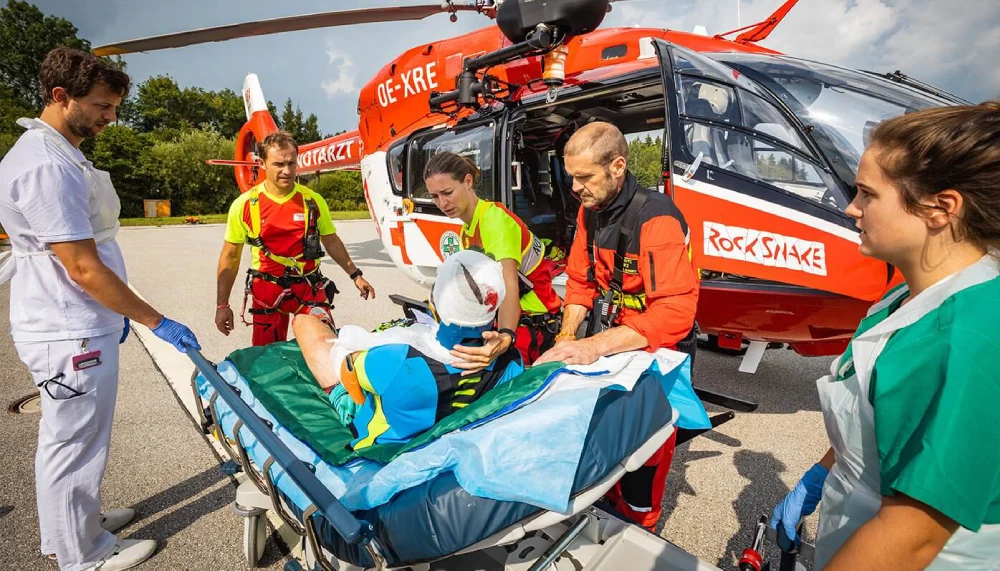In the scene of emergency rescue, a stretcher is not only a cold medical tool, but a life bridge between the patient and the hospital. When an accident or illness strikes, the stretcher becomes the first line of support, carrying the weight and unease, offering patients initial reliance and hope. It moves smoothly and firmly, whether through narrow hallways, rugged paths, or crowded areas, ensuring the fastest and safest delivery of the patient by medical staff.
1. Ambulance Personnel: Unsung Heroes
In the hustle and bustle of the city, intertwined with moments of quiet, a group of unsung heroes rush through streets and alleys, racing against time, competing with death, using professionalism and love to guard every life in need. They are ambulance medical personnel, and the stretcher in their hands is the most solid “life boat.”

Whenever the stretcher is slowly lifted, it represents more than just a physical action but the respect and care for life by the medical staff. They carefully cover patients with warm blankets, gently securing their bodies to avoid unnecessary pain during transfer. Simultaneously, professional first aid skills are crucial, as medical staff quickly assess the patient’s condition and perform necessary emergency treatments like CPR, bleeding control, or bandaging to buy valuable time for further treatment.
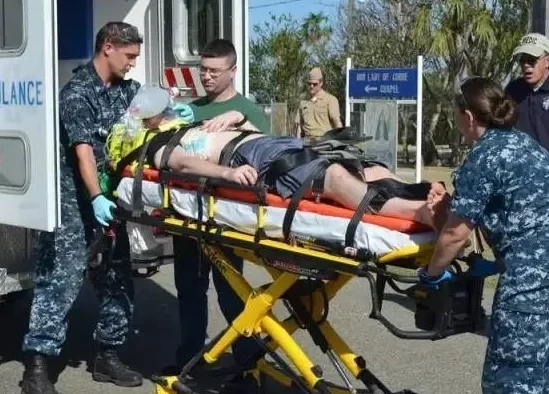
2. Origins of Ambulance Stretchers
2.1 Early Forms
The earliest ambulance stretchers date back to simple human-powered designs made of ropes, planks, or gabions, used in wars or disasters to transport the wounded. As civilization progressed, the design of stretchers evolved with stronger, lighter materials like wood and metal being introduced.
2.2 Development
2.2.1 Material and Technological Innovations
With the industrial revolution, metal materials such as aluminum alloy and stainless steel became widely used in producing ambulance stretchers. These materials offered strength, corrosion resistance, and lightweight properties, making them easier for paramedics to carry and use. Additionally, soft padding like foam or sponge was introduced to improve patient comfort during transfers.

2.2.2 Diversification of Design and Function
To accommodate various needs, stretchers adopted foldable and adjustable designs. Foldability reduced the stretcher’s size when not in use, while adjustability allowed paramedics to tailor the stretcher’s height, tilt angle, and other settings to suit the patient’s condition. Modern stretchers also included additional features like immobilization straps, handrails, and infusion holders to enhance patient safety and convenience for medical staff.

2.2.3 Intelligent and Informational Trends
As technology advanced, ambulance stretchers began incorporating intelligent systems with sensors and monitoring equipment that provide real-time data on patients’ vital signs. This information aids medical personnel in making timely, informed decisions during patient transfers.
3. Materials Used in Ambulance Stretchers
3.1 Metal Materials
3.1.1 Aluminum Alloy
Aluminum alloy is commonly used for its light weight, high strength, and good corrosion resistance. These stretchers are easily carried and quickly deployed in emergencies.
3.1.2 Stainless Steel
Though heavier, stainless steel stretchers are known for their extreme strength and durability, suitable for higher load capacities and extended service life.
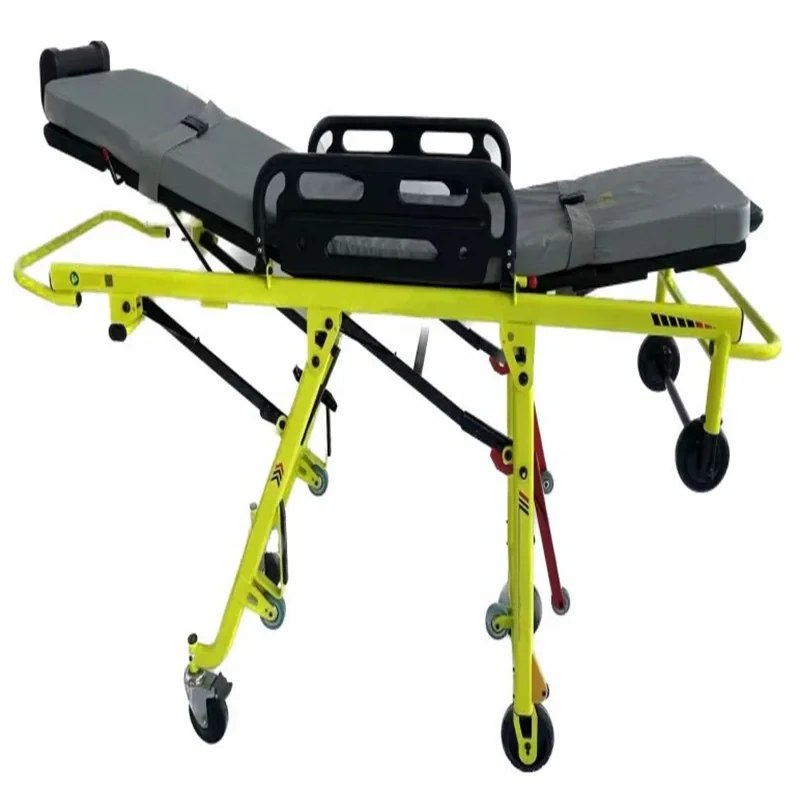
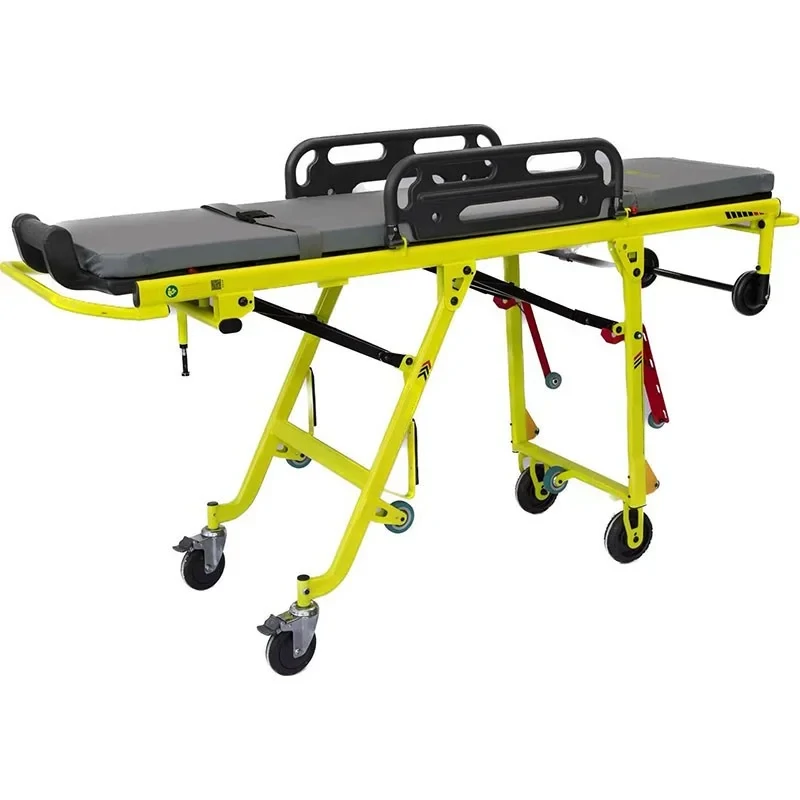
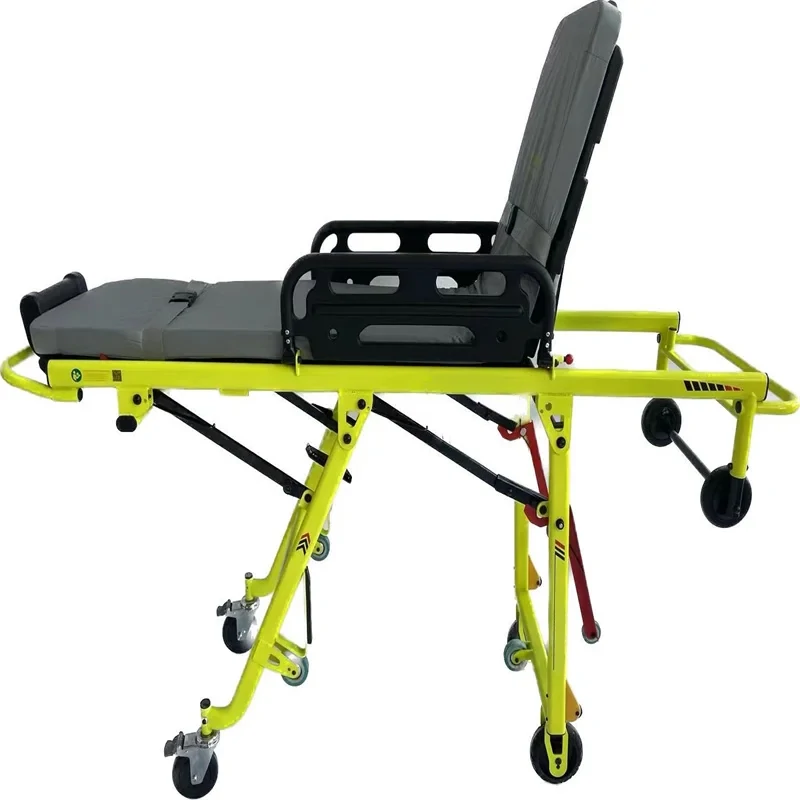
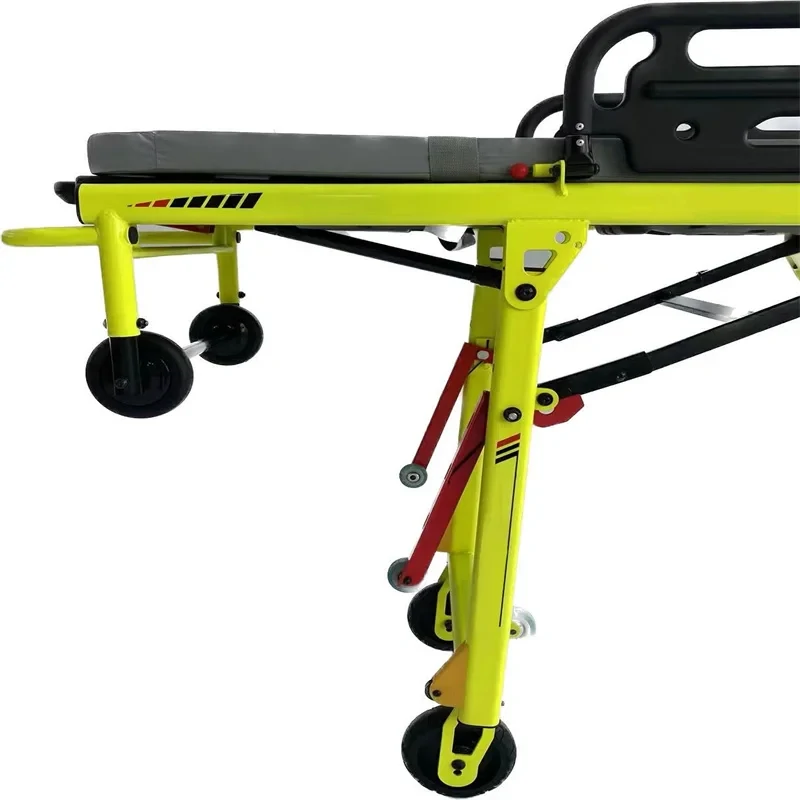
3.2 Non-metallic Materials
3.2.1 Synthetic Resin
Synthetic resin is lightweight with corrosion and impact resistance, used for complex designs that require strong but lightweight materials.
3.2.2 Plastics and Composites
Plastic and composite materials are used in foldable or rollable stretchers, combining light weight, strength, and good corrosion resistance.
3.3 Padding Material
3.3.1 Foam or Sponge Cushion
To enhance patient comfort, stretchers use foam or sponge cushions that provide softness and elasticity, reducing discomfort during transport.
3.3.2 Rubber or Non-slip Material
To prevent sliding or falling, non-slip materials like rubber are used on the stretcher bed to increase friction during transport.
3.4 Other Accessory Materials
3.4.1 Telescopic Handles
Handles at both ends of the stretcher, made of metal or plastic, allow easy lifting and carrying for healthcare workers.
3.4.2 Straps and Handrails
Stretchers are equipped with straps and handrails to secure patients and prevent them from slipping during transportation.
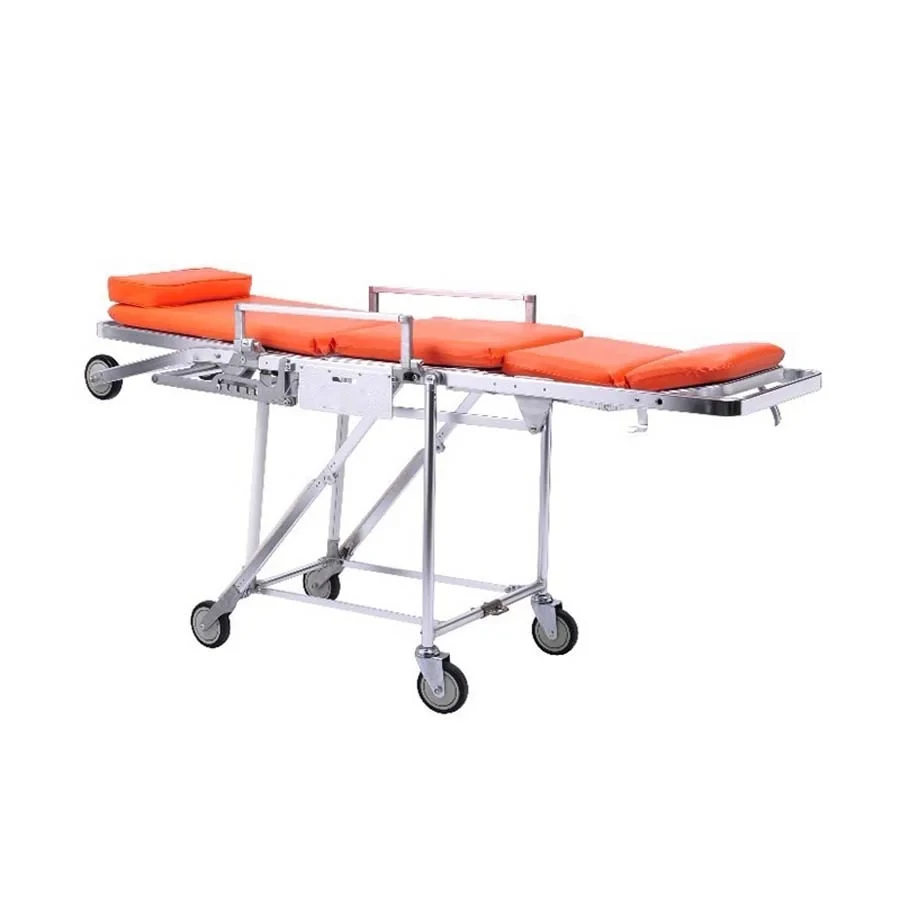
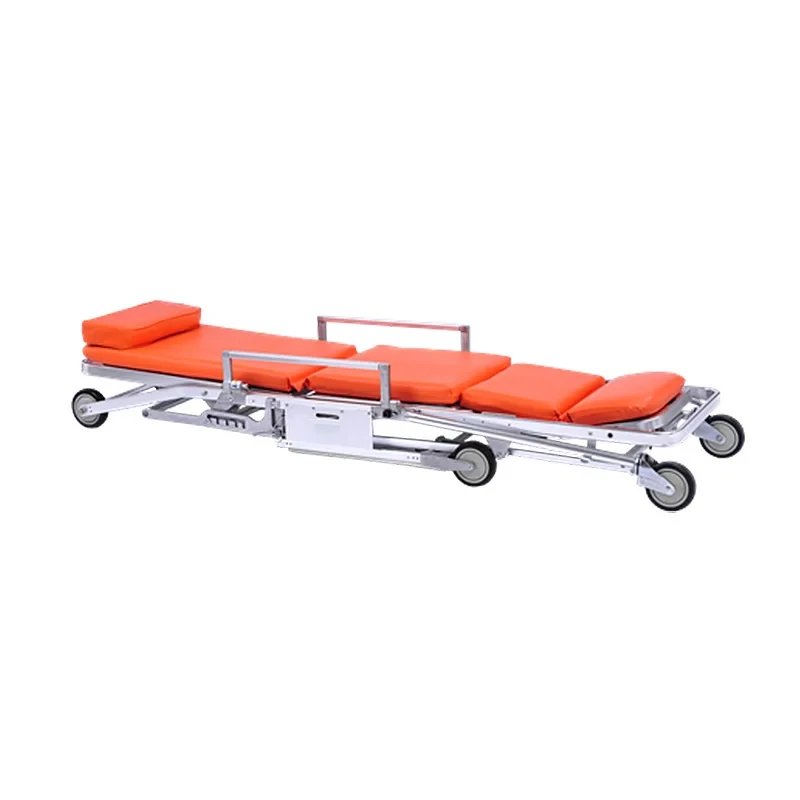
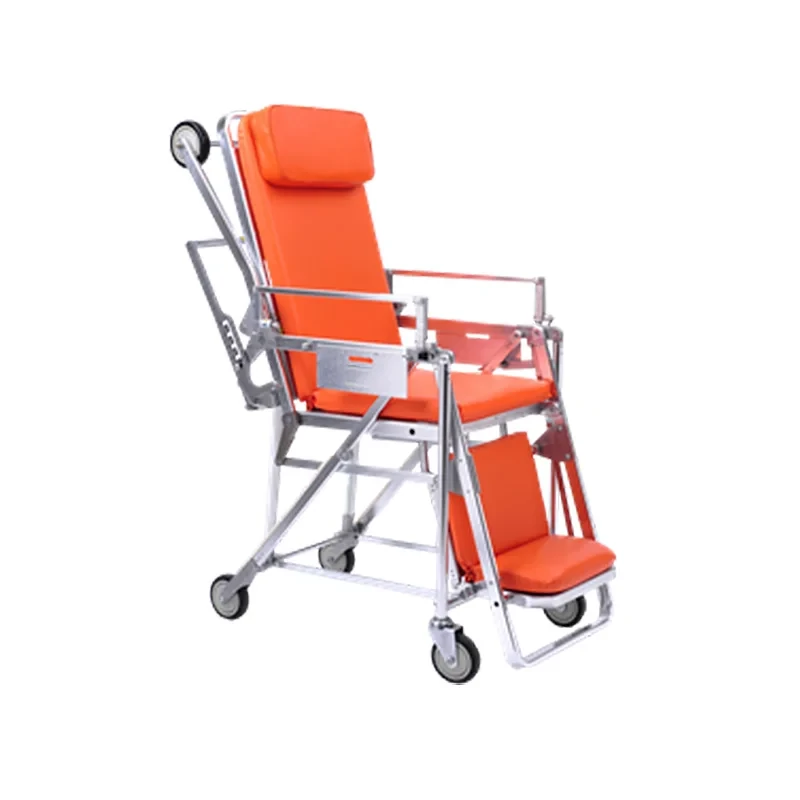
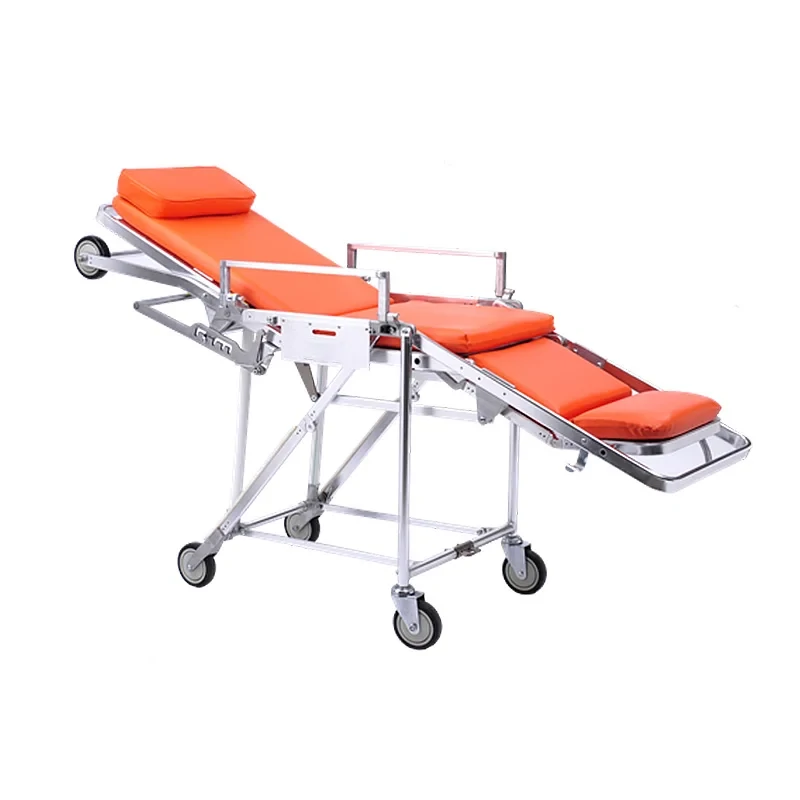
4. Modern Development of Ambulance Stretchers
4.1 Material and Structural Innovation
Lightweight and high-strength materials like aluminum alloy and carbon fiber are widely used to enhance portability while ensuring durability. Folding and retractable designs allow for compact storage and quick deployment.
4.2 Increased Functionality and Comfort
Modern stretchers feature adjustable functions such as height and tilt, soft cushioning for comfort, and restraint systems to stabilize the patient during transport.
4.3 Intelligent and Information Integration
Some stretchers integrate sensors and monitoring equipment to track vital signs and health parameters, providing real-time data to medical staff. Remote monitoring and communication capabilities further enhance patient care.
4.4 Customization and Individualization
Modern stretchers are increasingly customizable to meet the specific needs of different patient groups (e.g., children, elderly, disabled) or environmental challenges (e.g., mountainous areas, water rescues).
4.5 Environmental Protection and Sustainability
Environmentally friendly materials and energy-saving designs are being adopted to reduce the ecological impact of stretcher production and usage.
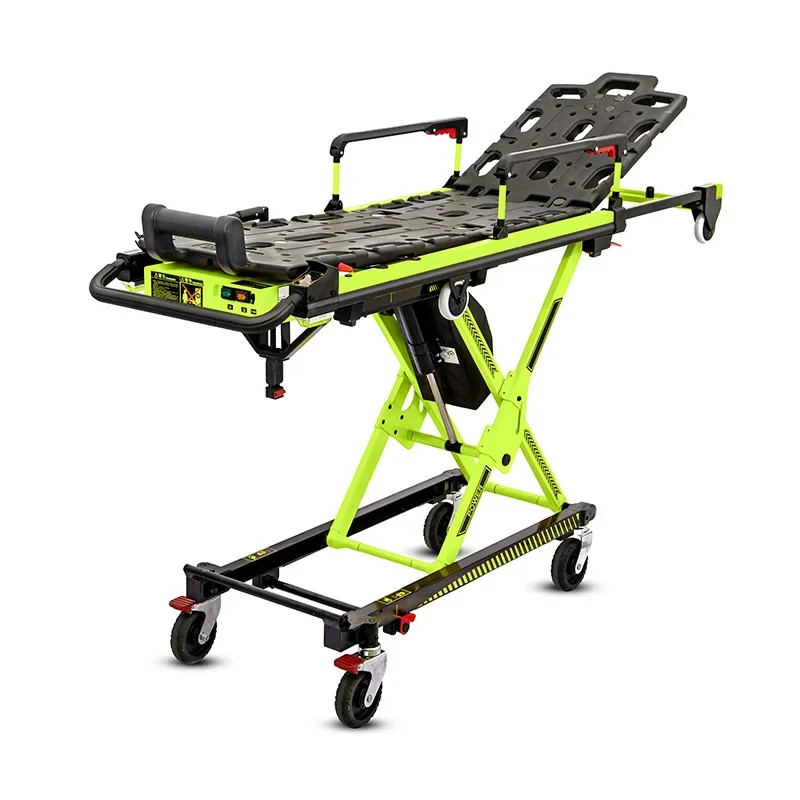
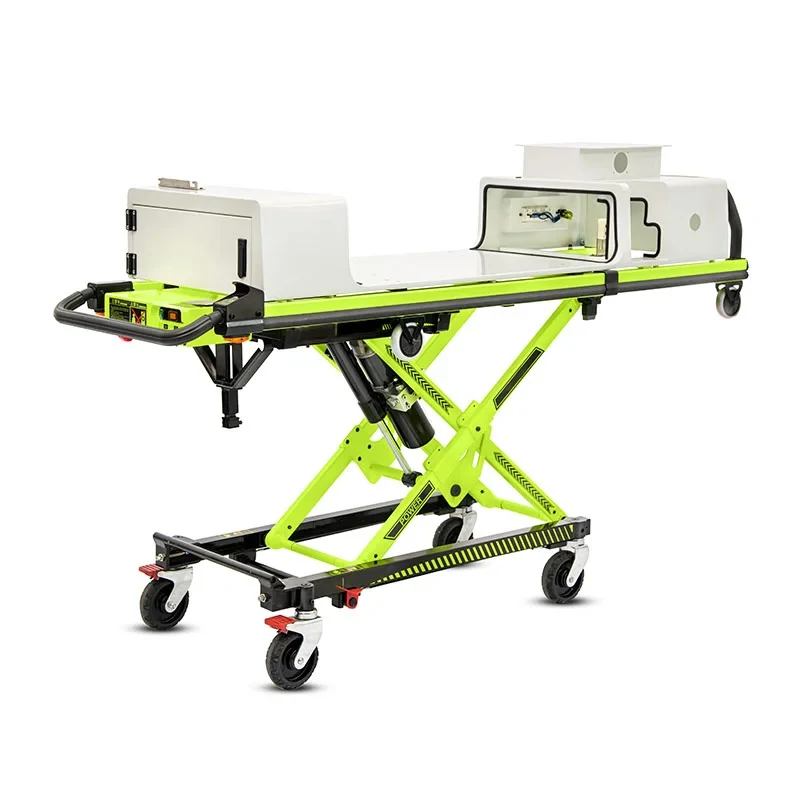
5. Conclusion
The evolution of ambulance stretchers, from simple human-powered designs to modern intelligent systems, reflects continuous advancements in medical emergency technology. Material innovations, enhanced functionality, and the integration of smart technologies have all contributed to improved patient care. As medical technology continues to evolve, the future of ambulance stretchers promises even more innovative designs to meet the growing demands of medical emergencies.

